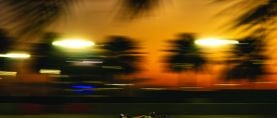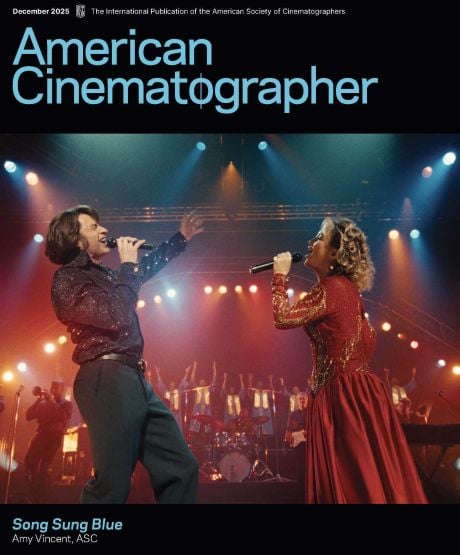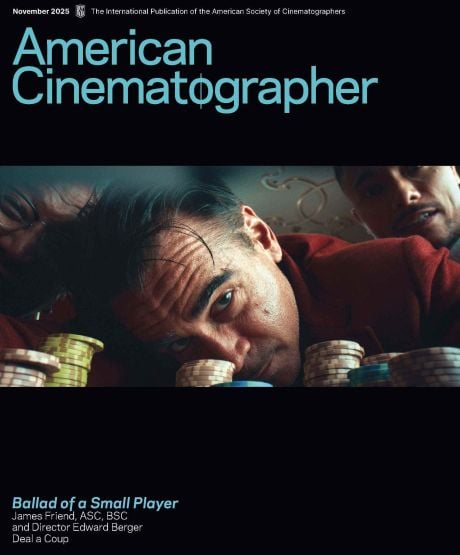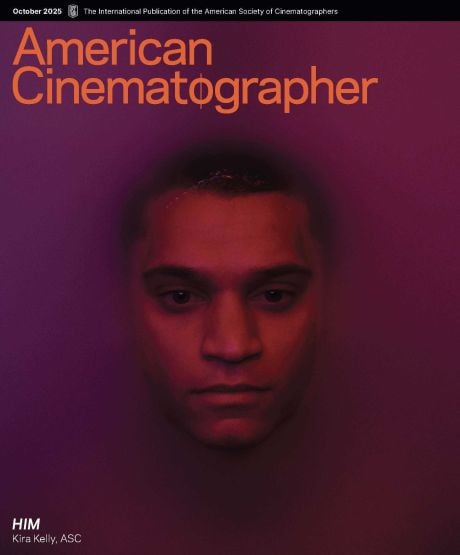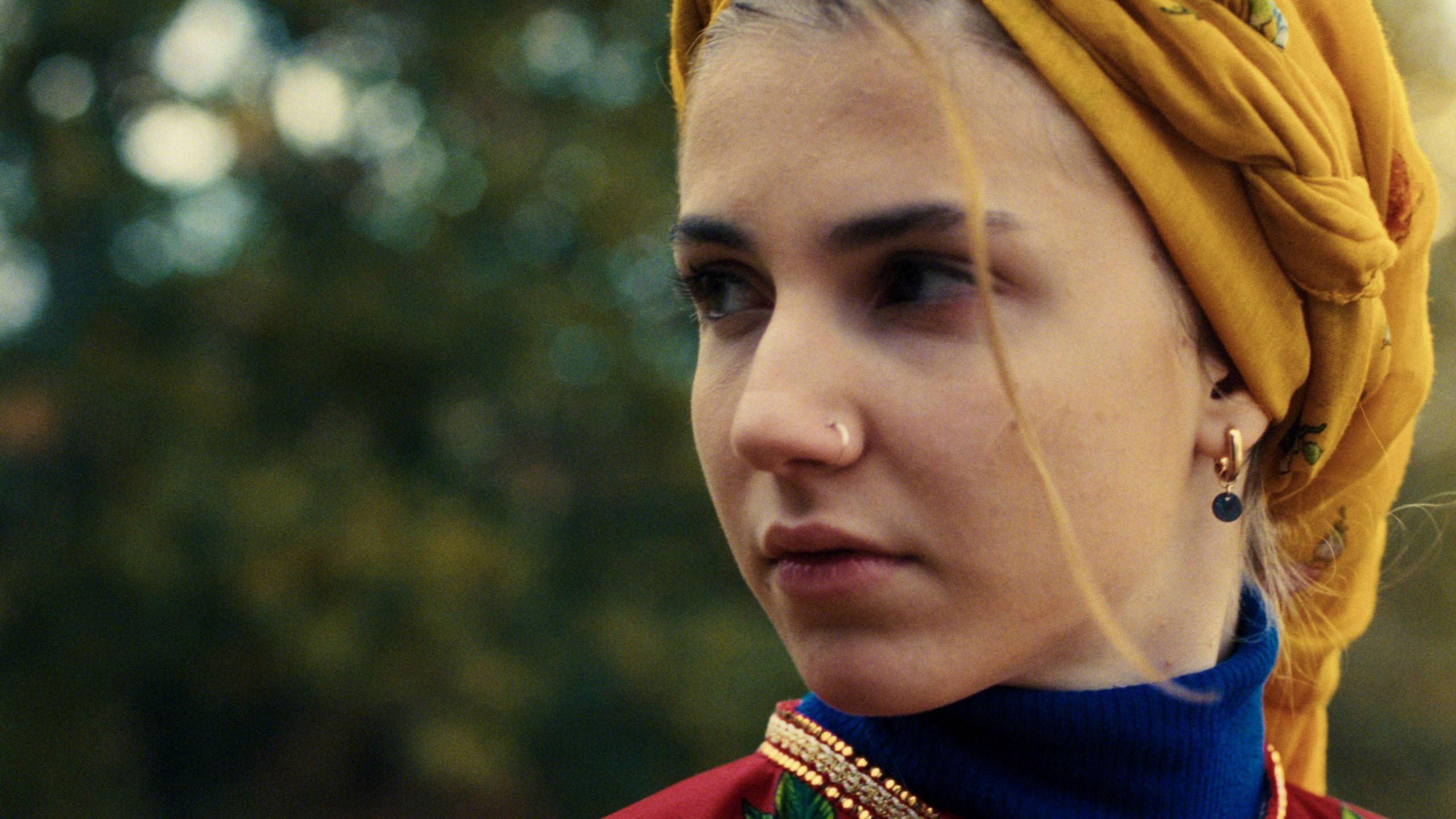
Sundance Standouts 2025
A look at some outstanding features that screened at the recent Sundance Film Festival in Park City, recommended for their distinctive camerawork.
Omaha
Cinematographer: Paul Meyers, ASC
Director: Cole Webley
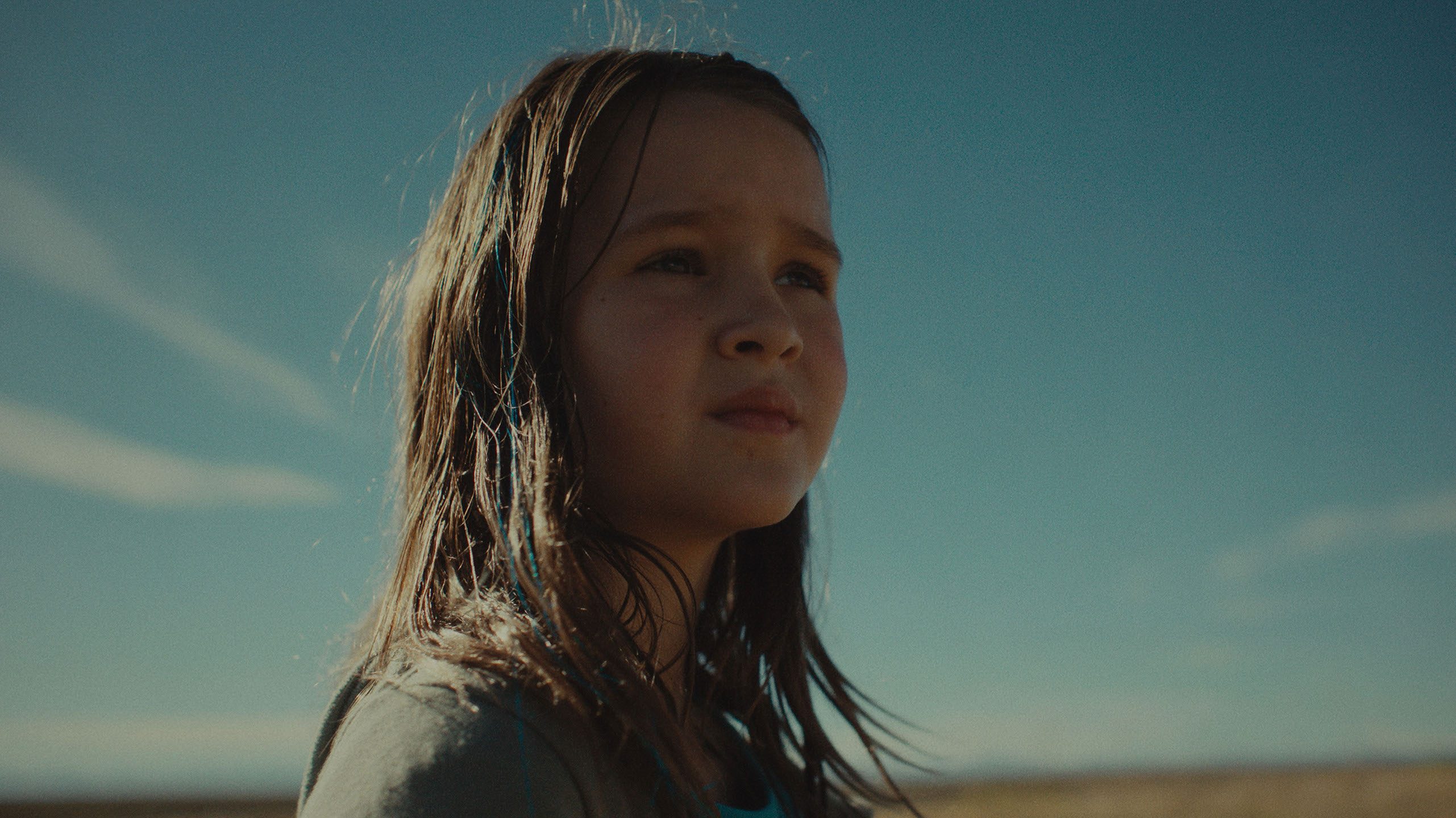
Set in the wake of the 2008 financial crisis, Omaha begins with Dad (John Magaro) rousing 9-year-old Ella (Molly Belle Wright) and 6-year-old Charlie at dawn and packing them into the family station wagon just as a police officer comes by to make sure they’re leaving, implying the family has been evicted. As the family hits the road, it’s not clear where they’re going — or whether their next stop will be a better one.
Dad tries to treat the trip in part as a family vacation, getting the kids a kite and ice cream and encouraging them to take in the vistas. The landscape of the American West functions as a source of both wonder and cruelty. Its variegated beauty is astounding to Charlie and Ella, who are taking it in for the first time. But its vastness is unyielding, indifferent to the family’s struggle. Meyers, a longtime collaborator of Webley, captures this dichotomy with stunning wides of sun-washed landscapes and dynamic overheads of the beat-up station wagon dwarfed by the vast freeway system. Inside the car, the family dynamic fills every inch of the space, with long takes often capturing what feel like spontaneous reactions and improvisations from the young actors. Special attention is paid to Ella’s POV of her dad; many of her close-ups are shot from a low angle, giving her expressions weighted importance.
Throughout the film, Meyers’ images are smooth and softly textured, never overly glossy. The landscapes make the most of natural light, but even in interiors, the lighting feels minimal. Meyers uses practicals to great effect — like the warm glow of a bedside lamp in a motel room that marks a sudden contrast from the long, sun-filled shots in the car. For a scene of the kids playing in the motel pool, Meyers layers the blue glow of the underwater lights with streaks of illumination from streetlights and courtyard lights on the surrounding concrete. The effect is like the film itself: melancholic but diverting at the same time.
Bunnylovr
Cinematographer: Daisy Zhou
Director: Katarina Zhu
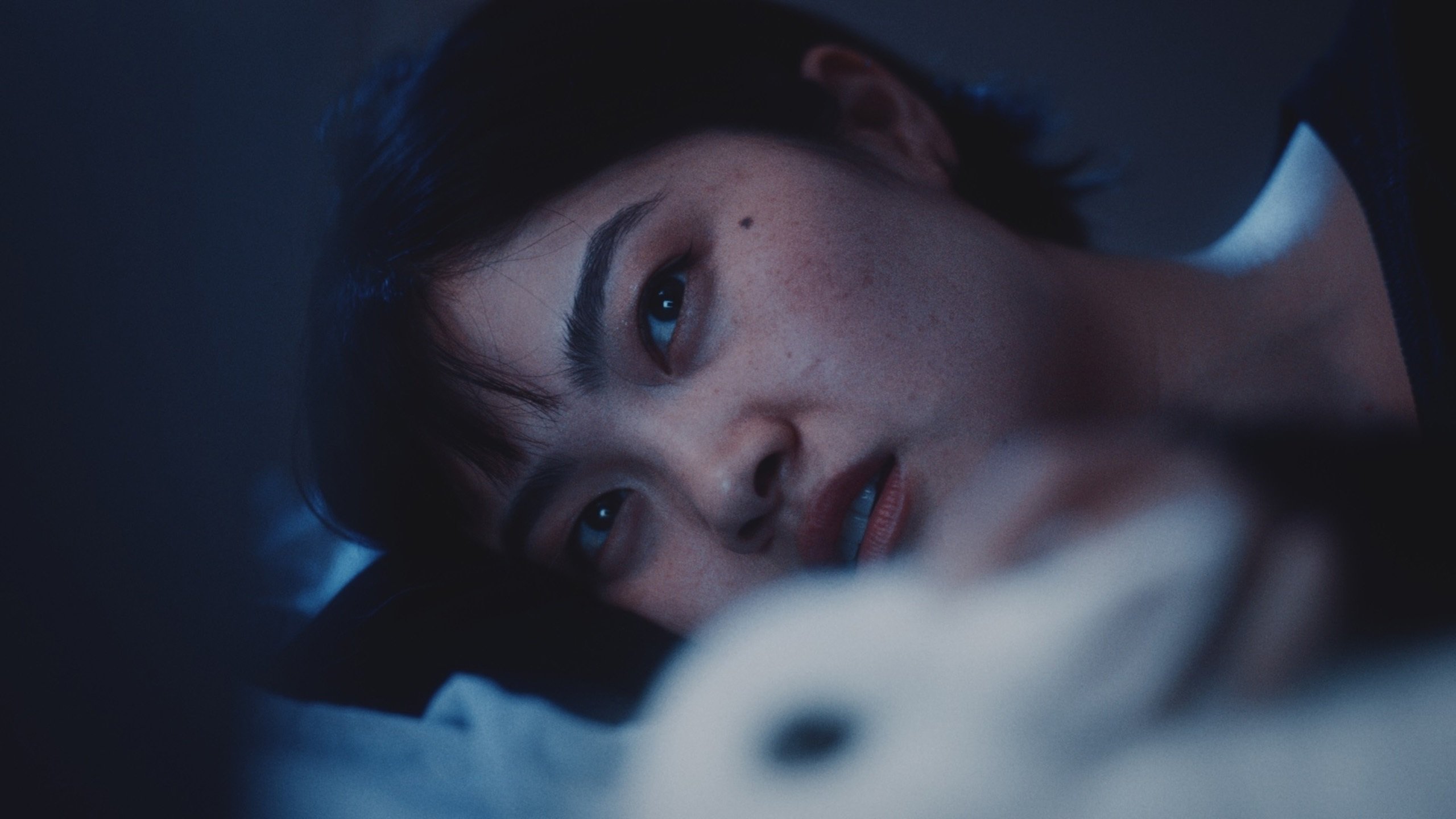
Bunnylovr follows a Chinese-American twentysomething living an aimless life in New York City whose priorities are reordered by a series of surprise events. Newly single but still hung up on her ex, Rebecca (played by director Zhu) drifts through her days but finds the connection she craves at night, when she works as a cam girl, chatting with paying admirers. An unusual gift from a regular client, John (Austin Amelio), arrives just as Rebecca reconnects with her estranged father (Perry Yung), and soon her life is turned upside-down.
As the story unfolds, Zhou’s camera maintains a literal and metaphorical closeness to Rebecca that no character in the film is able to approximate. The cinematographer establishes this intimacy by shooting mostly handheld and favoring long, probing shots that often linger on Rebecca’s face. Eschewing traditional coverage, Zhou frequently captures dialogue in two-shots or dirty close-ups, enhancing our connection to the character.
Translating online life to the big screen can be challenging, but the filmmakers do it adeptly. During Rebecca’s group-cam shows and private sessions, we see her alone in her room, shrouded in the blue glow of her computer screen. Zhou balances that cool tone with a naturalistic lighting scheme that skews somewhat dark, suggesting Rebecca loses track of time while online. The generally naturalistic approach is punctuated by moments of visual drama; for instance, during Rebecca’s frantic sexual encounter with her ex, the bedroom is awash in deep, crimson red. She eventually flees, choosing to protect herself even if it means she’ll be alone.
Atropia
Cinematographer: Eric K. Yue
Director: Hailey Gates
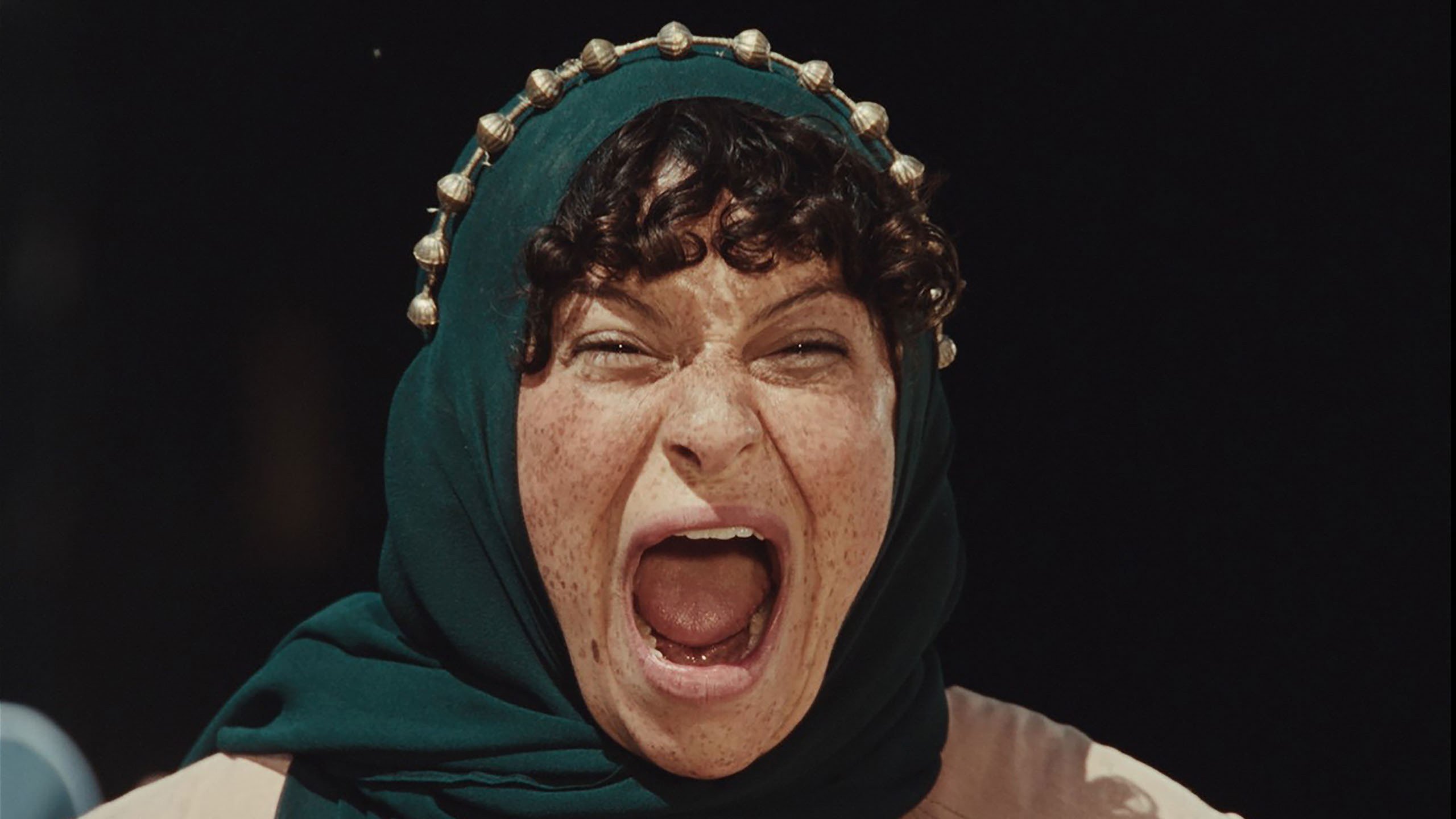
Atropia is a fictitious city created by the American military in the desert of California in the mid-2000s. Serving as a training site for soldiers who will be shipped off to Iraq, it offers an immersive experience complete with pyrotechnics, fake blood and limbs, foul smells, and actors who live on-site to perform various roles. Fayruz (played by Alia Shawkat), an Iranian-American actress, sees Atropia as an important acting gig, and when an American movie star (Channing Tatum) visits to prepare for an upcoming project, she tries desperately to get his attention. She instead attracts Abu (Callum Turner), an “insurgent” played by a U.S soldier who is in between tours. Romance blossoms, sparking a number of problems.
Atropia opens with a sequence ripped from a gritty war movie, replete with snap zooms and a jittery shutter that make a military-patrol incident look dangerous. Quickly, it’s revealed that the incident is only a botched drill. Throughout the film, Yue plays with tone in this way, taking on the visual style of high-octane action, satirical comedy or romance when the narrative calls for it. In a later scene, for instance, Yue slowly zooms out as a soldier sings a surprisingly sweet version of Phantom Planet’s “California” as he pretends to hold Abu prisoner. The zoom reveals a nighttime desert landscape blanketed in a cool darkness. The camera move puts Atropia’s hijinks in perspective, forging a brief detente between the soldiers and their captives. Later still, Yue employs a split diopter during an important reveal, making Fayruz’s perspective feel weighty.
The filmmakers use a grab-bag of formats to cleverly establish tone and period. The military base’s low-rent training videos, which feel straight out of an episode of Tim and Eric Awesome Show, Great Job! (Tim Heidecker has a small role as an officer), mimic the grainy look of early 2000s DV. Similarly, the footage shot by the military training group’s “journalist” looks like it was created by a prosumer news camera from that era. Night vision and FLIR-like thermal imaging are also featured, as when Abu gives Fayruz a sponge bath in the middle of the desert at night. The scene is shot from the perspective of the military trainees, who are watching the couple through night-vision goggles, preparing to capture them.
Atropia is supposed to mimic a desert city and often appears to be baking in the hot sun. Yue clearly pumped up strong natural daylight with additional illumination when necessary to capture the heat reflecting off of the sand. At night, the film often wades into romantic territory, creating a look of soft desert moonlight. Tactical equipment often motivates the lighting, as in a cave scene that appears to be lit only by the characters’ headlamps.
DJ Ahmet
Cinematographer: Naum Dokevski
Director: Georgi M. Unkovski
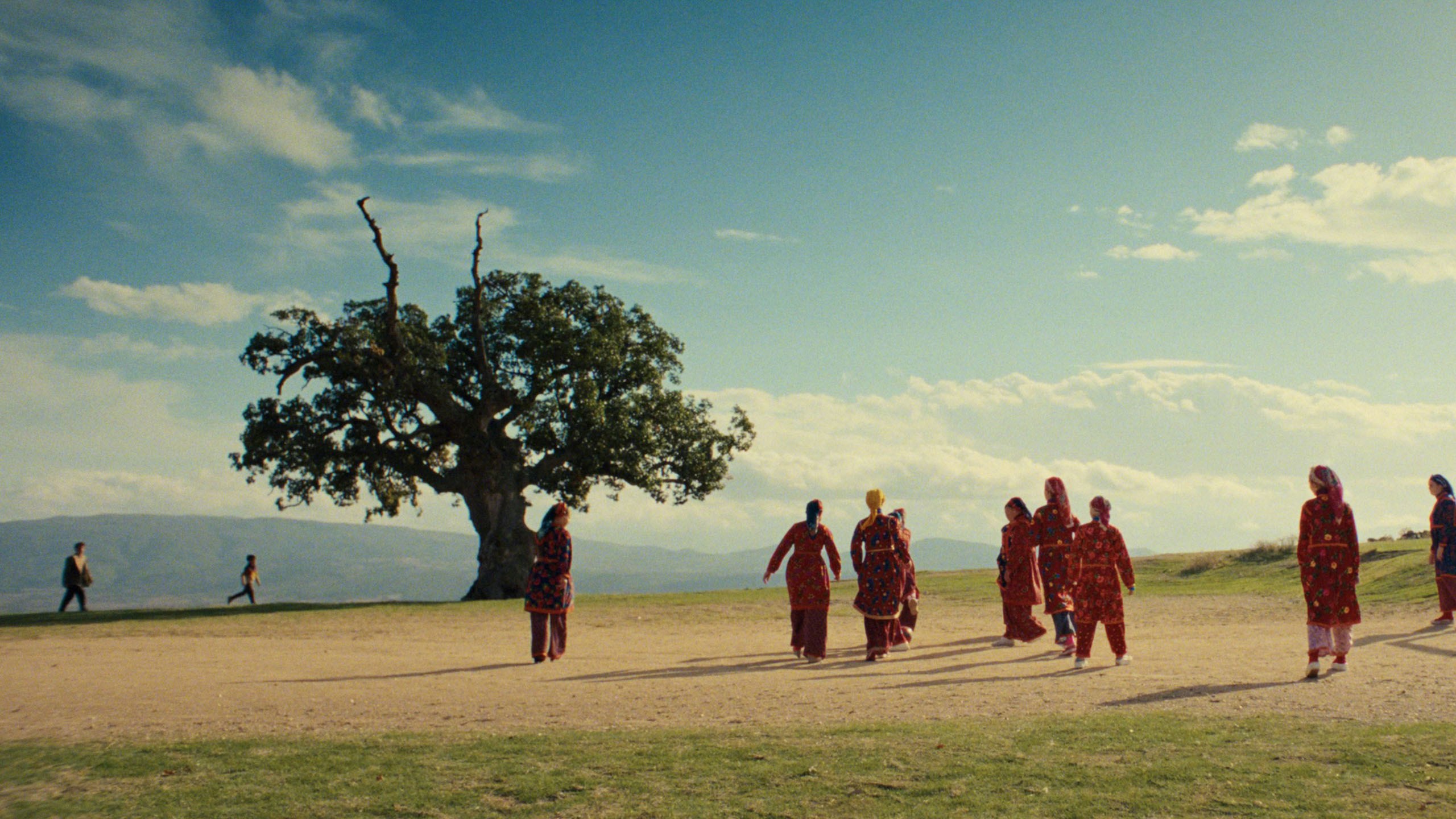
DJ Ahmet, a coming-of-age film set in North Macedonia’s remote village of Yuruk, fuses the lushly photographed portrayals of rural village life in the films of Nuri Bilge Ceylan with the youthful romantic optimism of American classics like Say Anything… or Footloose. The story follows 15-year-old Ahmet (Arif Jakup), who’s forced to leave school to tend his family’s sheep in the wake of his mother’s death. Ahmet finds diversion and joy in music, but his strict father and the village’s ever-elusive internet access make his pursuit of the artform difficult. Still, it connects him to Aya, his beautiful neighbor, who plans to dazzle the village with a cutting-edge dance routine at a local festival. In a romantic gesture, Ahmet becomes her DJ, rigging speakers to his family’s tractor so Aya and her dance troupe can practice their routine.
Dokevski goes handheld throughout much of the film, balancing it with some
Steadicam shots. The result is a look that feels authentic to Ahmet’s
day-to-day as well as his expansive dreams. The cinematographer mixes
luminous wides of the idyllic hillside village with extreme close-ups of
Ahmet and his family during their emotionally charged scenes. He
captures sun-dappled and moonlight-filled aerial shots of Yuruk’s mosque
and the surrounding town. The mosque’s tower is fitted with speakers
used for the daily call to prayer and several unexpected gags and
pivotal moments.
When Ahmet first spots Aya, she is often captured in slow motion, a
classic visual trope for portraying young love. In one memorable
sequence, he sees her running in slow motion down the wooded hill near
his house at night. Dokovski zooms slowly in on Ahmet as he watches her
in the distance, almost paralyzed by her presence. Then, there’s a match
cut to a zoom moving at the same pace into the woods, creating a sudden
sense of mystery and suspense. Ahmet dons a headlamp and enters the
woods, where he makes an amazing discovery: a rave in the middle of a
clearing. The camera conveys his elated disbelief with swooping
360-degree moves around him. As he prepares to let loose, he spots his
flock of sheep, who have wandered into the rave. Dokovski’s camera
hilariously drops to sheep height, showing the animals weaving through
the dancers. With this sequence of shots, the camera powerfully
communicates the emotional rollercoaster that feels universally true to
teenage life.
All images courtesy of the Sundance Institute.
Look for additional AC coverage of films that made their debut at the festival.

